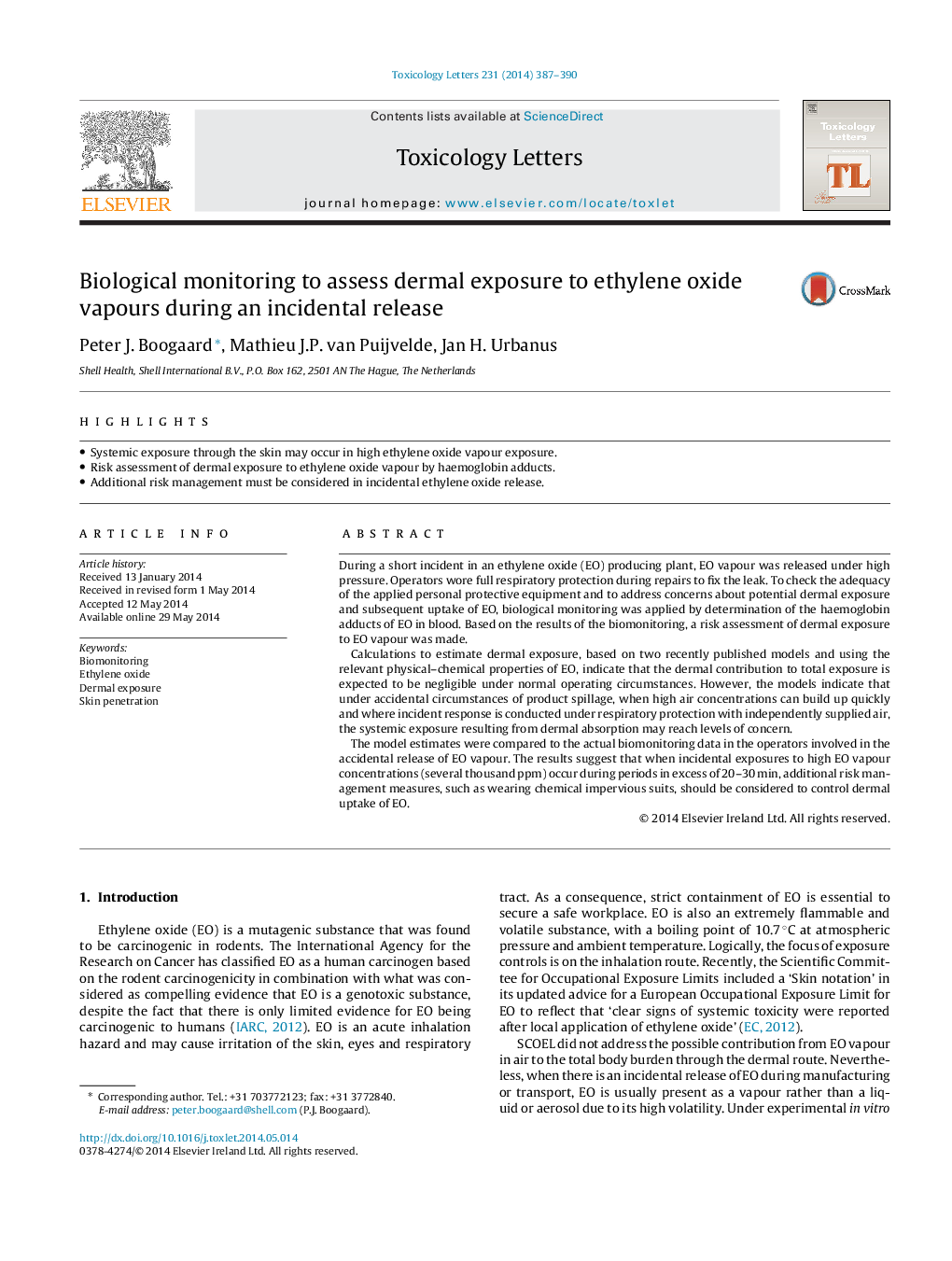| کد مقاله | کد نشریه | سال انتشار | مقاله انگلیسی | نسخه تمام متن |
|---|---|---|---|---|
| 5859970 | 1133160 | 2014 | 4 صفحه PDF | دانلود رایگان |
- Systemic exposure through the skin may occur in high ethylene oxide vapour exposure.
- Risk assessment of dermal exposure to ethylene oxide vapour by haemoglobin adducts.
- Additional risk management must be considered in incidental ethylene oxide release.
During a short incident in an ethylene oxide (EO) producing plant, EO vapour was released under high pressure. Operators wore full respiratory protection during repairs to fix the leak. To check the adequacy of the applied personal protective equipment and to address concerns about potential dermal exposure and subsequent uptake of EO, biological monitoring was applied by determination of the haemoglobin adducts of EO in blood. Based on the results of the biomonitoring, a risk assessment of dermal exposure to EO vapour was made.Calculations to estimate dermal exposure, based on two recently published models and using the relevant physical-chemical properties of EO, indicate that the dermal contribution to total exposure is expected to be negligible under normal operating circumstances. However, the models indicate that under accidental circumstances of product spillage, when high air concentrations can build up quickly and where incident response is conducted under respiratory protection with independently supplied air, the systemic exposure resulting from dermal absorption may reach levels of concern.The model estimates were compared to the actual biomonitoring data in the operators involved in the accidental release of EO vapour. The results suggest that when incidental exposures to high EO vapour concentrations (several thousand ppm) occur during periods in excess of 20-30Â min, additional risk management measures, such as wearing chemical impervious suits, should be considered to control dermal uptake of EO.
Journal: Toxicology Letters - Volume 231, Issue 3, 15 December 2014, Pages 387-390
